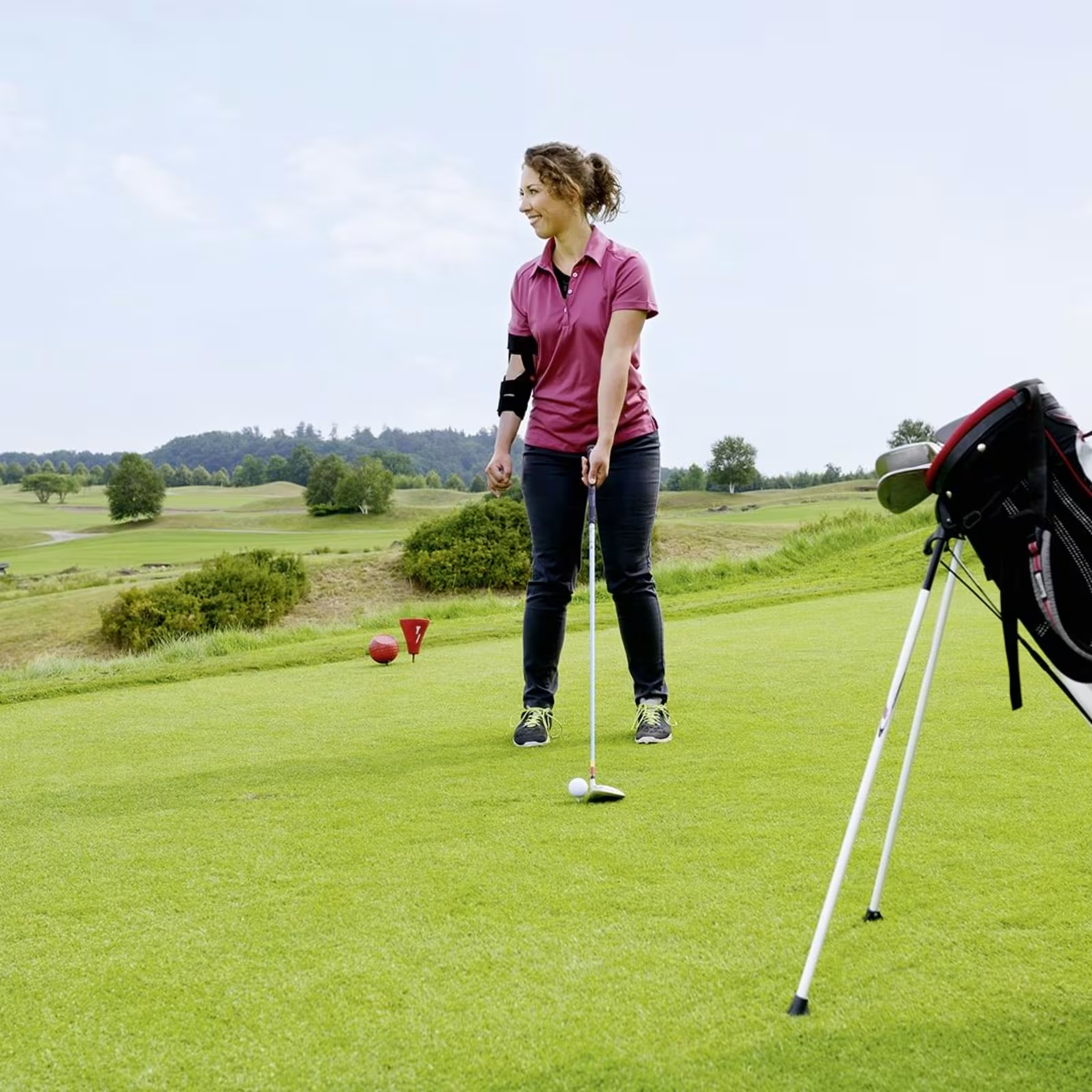
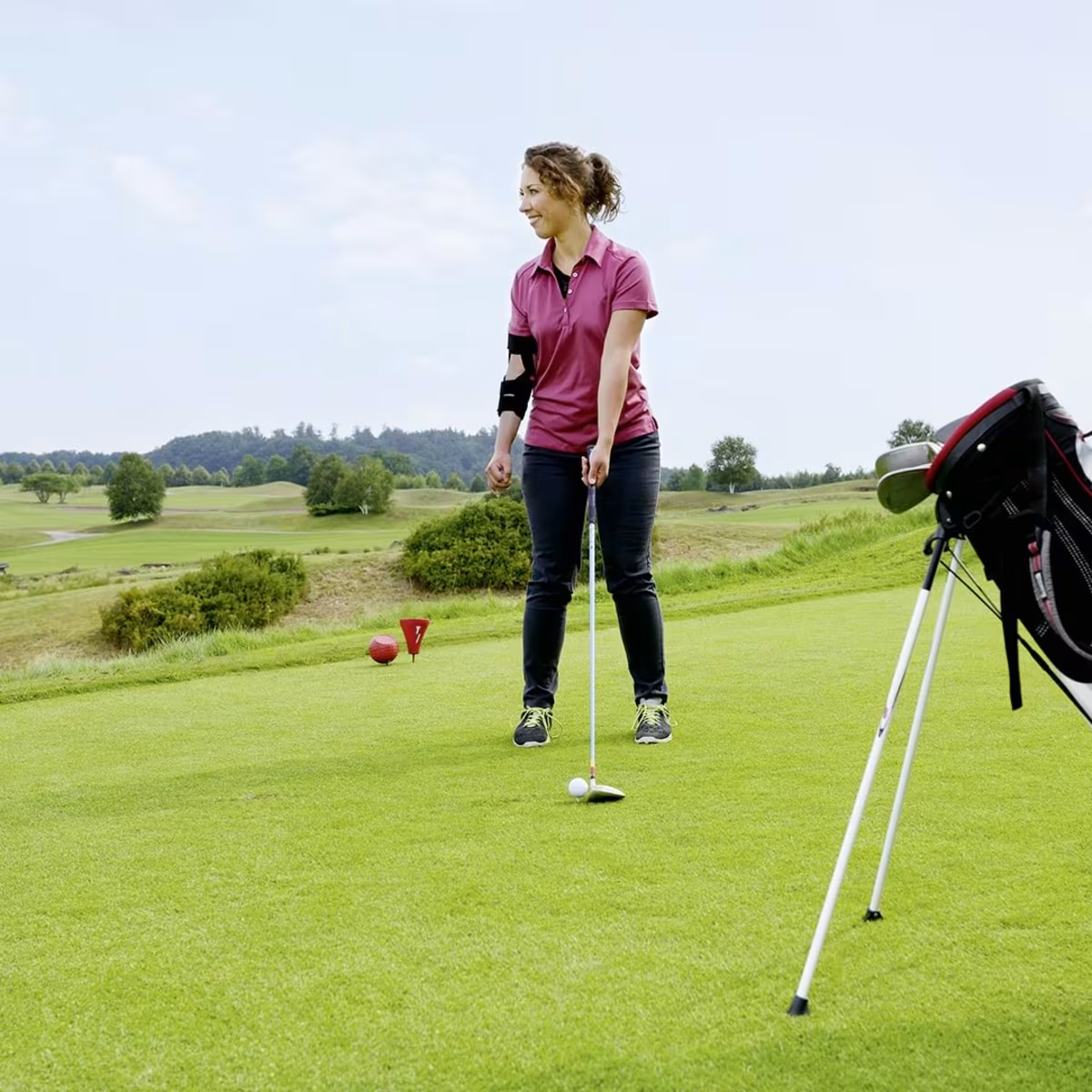
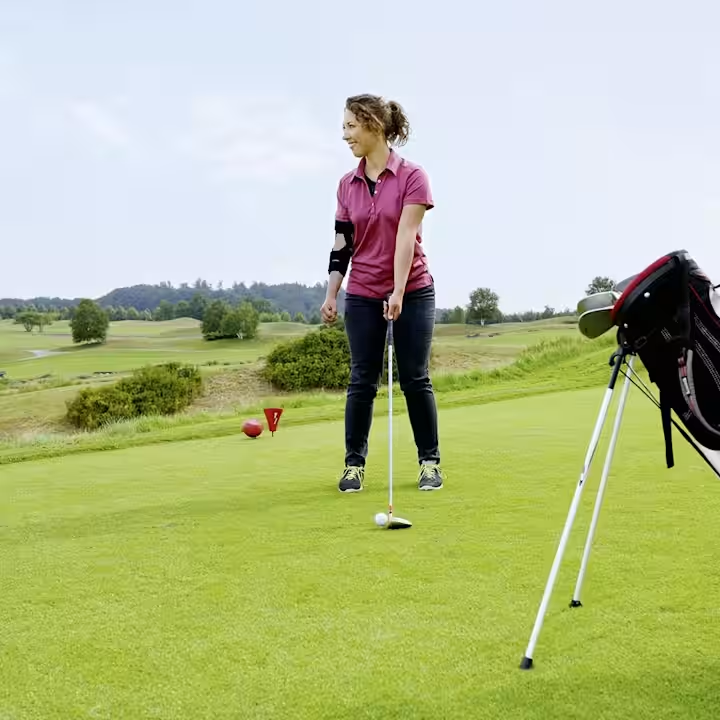
Arm and shoulder joint orthoses
Arm, shoulder joint and elbow orthoses and supports can help provide relief in everyday life or special situations.
Arm, shoulder joint and elbow orthoses and supports can help provide relief in everyday life or special situations.
Improve your well-being with an arm or shoulder joint orthosis
Virtually all of the tasks and activities in our everyday routine require the use of our arms and hands. But often, we don’t realise just how much we depend on them until we can no longer move them freely. Orthoses and supports for the arm, shoulder joint and elbow joint can help provide relief in everyday life or special situations.
This includes correcting your posture or taking the strain off your joints. However, the role they play will vary, depending on your clinical diagnosis and your actual symptoms. Arm supports and orthoses can be worn temporarily or permanently to make everyday life easier and improve your well-being.
What is an arm or shoulder joint orthosis?
An arm orthosis is a medical device that you wear externally on your body to support or protect your locomotor system. Your doctor may prescribe an orthosis to treat an injury or illness. Ideally, they will consult with an O&P professional to determine the right device. Arm orthoses serve a variety of purposes. They can correct posture and movement patterns, relieve strain on your upper arm or forearm, and stabilise, mobilise or immobilise certain regions of your arm. Static orthoses are used to provide stability. Dynamic shoulder, elbow joint or arm orthoses are designed to compensate for a loss of arm function, support weak muscles or optimise joint flexibility. Orthoses can be made from a variety of materials, depending on the treatment approach. These include thermoplastics, silicone or carbon, for example.
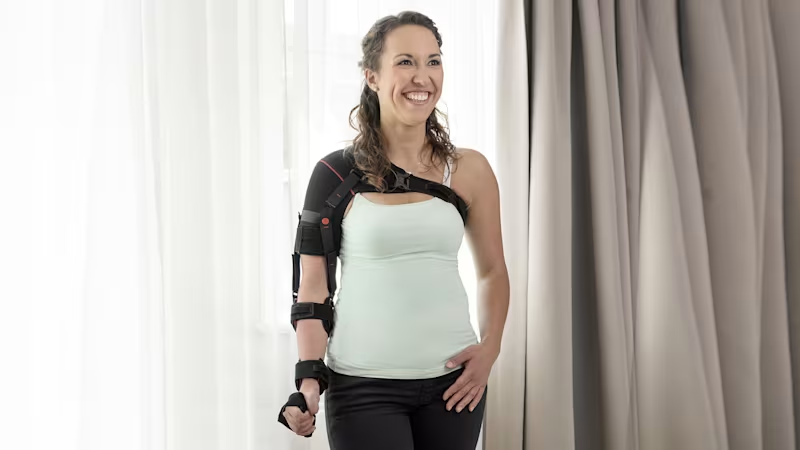
What is an arm or shoulder support?
Supports are made of fabric with a high or low stretch factor and are worn directly on the skin. They fit very snugly to exert controlled compression on your joints and tissue, but they don’t impact your freedom of movement in any way. Shoulder and arm supports can stimulate your blood circulation and stabilise your joints. Elastic inserts called pads may be integrated to provide an added massage effect.
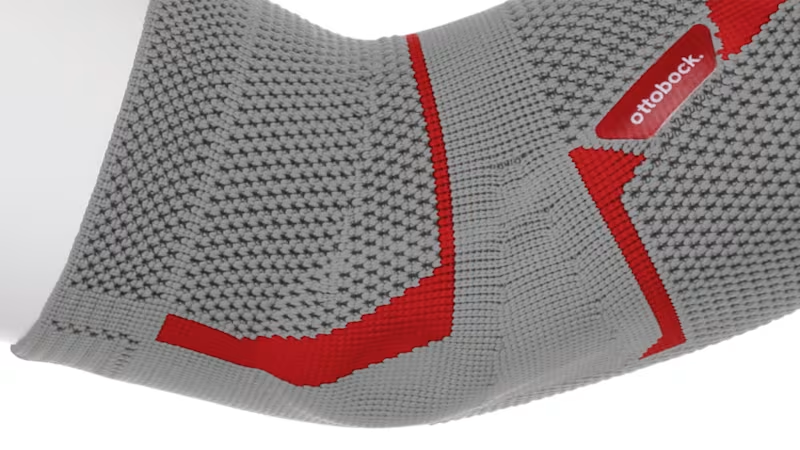
When do I need an orthosis or support for my shoulder or arm?
Shoulder and arm orthoses can be used to treat acute medical conditions or to support rehabilitation. For example, shoulder joint orthoses can be used to help patients after a stroke. In such cases, the orthosis is often used to correct a faulty position of the humerus that would otherwise lead to shoulder pain and impaired movement. The orthosis realigns the bones in the proper position in order to remedy the source of the pain – a key factor for successful rehabilitation.
Epicondylitis, a condition commonly known as tennis or golfer’s elbow, is most frequently caused by overuse of the elbow muscles and tendons. Patients typically report that their elbow hurts or feels very weak. In such cases, an orthosis can exert pressure on the muscles to take the strain off the irritated tendons and relieve pain. It not only provides relief for acute conditions but can prevent damage caused by repetitive movements.
People with arthrosis often experience swelling or joint effusion, for example, in the shoulder or elbow joint region. Thanks to its compression properties, a support can help to reduce this swelling more quickly. It also provides relief for contusions and irritation.
How do I wear a support or orthosis on my arm or shoulder?
Putting a support or orthosis on your arm or shoulder can be challenging if you’re trying to do it alone. And even more so if your mobility is restricted. So if you need an arm or shoulder support or orthosis, it’s worth paying close attention to the design. Provided they still have sufficient dexterity, the user can put the Ottobock Omo Neurexa plus on without outside help thanks to its innovative design. Once a professional has demonstrated how to do it properly, all it takes is a little practice.

Back to everyday activities: three steps to an Ottobock orthosis
- Here you’ll find an overview of all the orthoses and supports that could potentially help you. Take the list with you to your next doctor’s appointment.
- Talk to your doctor about which orthosis is best suited to your symptoms and condition. Your doctor can then write you a prescription for the appropriate orthosis.
- Take your prescription to a medical supply company. They’ll give you your new orthosis and adjust it to fit your exact body measurements.
Subscribe to the Ottobock newsletter
Stay in the loop on all things orthotics and prostheses, new product releases, and motivational insights.